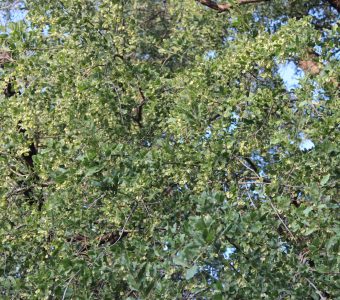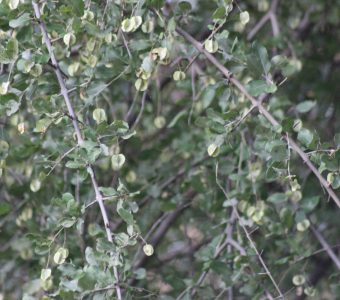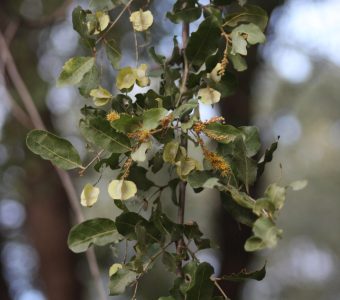


Botanical Name: Combretum imberbe
Common Name: Leadwood, Mubimba, Muzwili, Chilusa, Nyonja, Mubimba
Plant Family: Combretaceae (Combretum Family)
Growth Form, Habitat and Distribution: A large deciduous tree with upward-spreading, sometimes drooping, branches and an open, rounded crown, Branchlets with reddish scales and sometimes spiny. Occurs in the southern, lower rainfall parts of Zambia, usually on sandy soils in Munga and Kalahari woodland, around Baikiaea forest margins, sometimes in Mopane woodland and dambo margins.
Size: Height up to 30m, spread up to 20m.
Bark: Pale to dark grey-brown, vertically fissured with horizontal cracks and uniform scales.
Leaves: Simple, opposite, often on spine-tipped twigs, oval, usually (2.5 to 6cm), leathery grey-green, hairless but with minute silvery scales below, usually a tipped apex, margin wavy. Petiole 1 cm.
Flowers: Small, sweet-scented, pale yellow-green, or creamy petals with a purple-brown centre, on axial or terminal stalks, September to January.
Fruit: Distinctively, pear-shaped, smooth, woody brown capsule with pale warts (4 to 6cm), splitting into two halves and shedding 4 winged seeds, April to July. scales, March to May, sometimes remaining on the tree.
Uses: The wood is heavy and hard and previously used for railway sleepers, sometimes converted to furniture attracting bees and other insects and hornbills.
